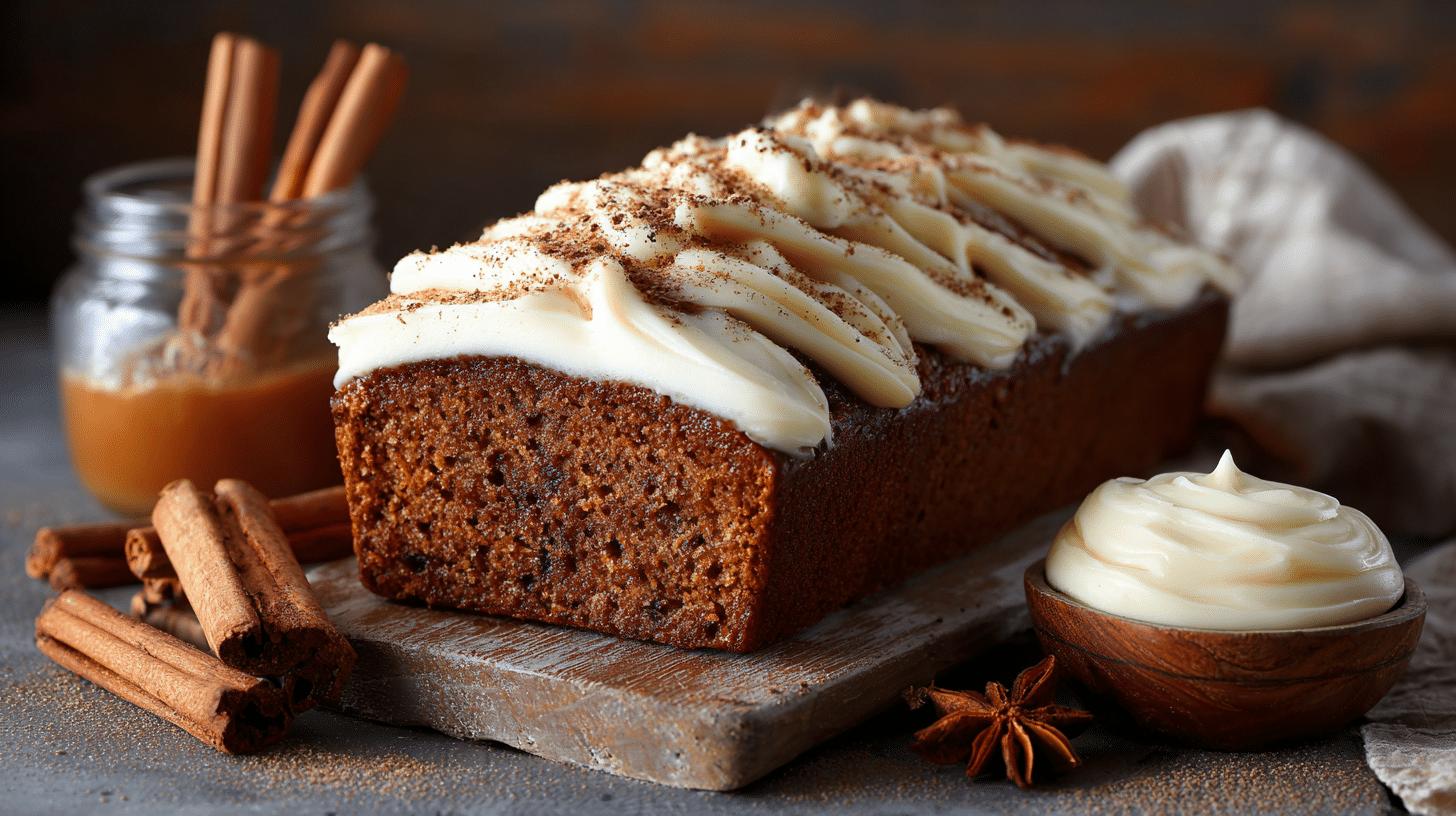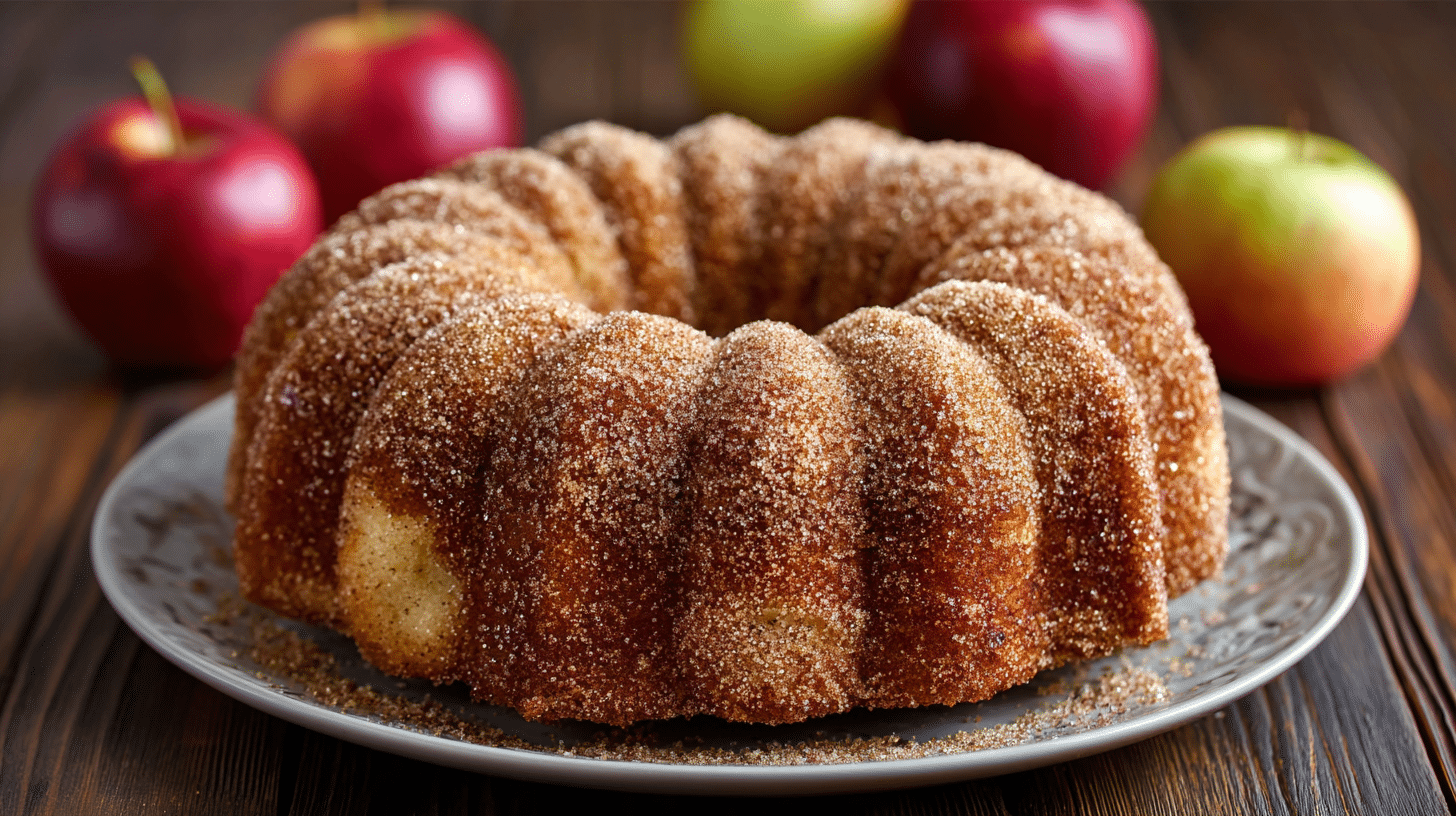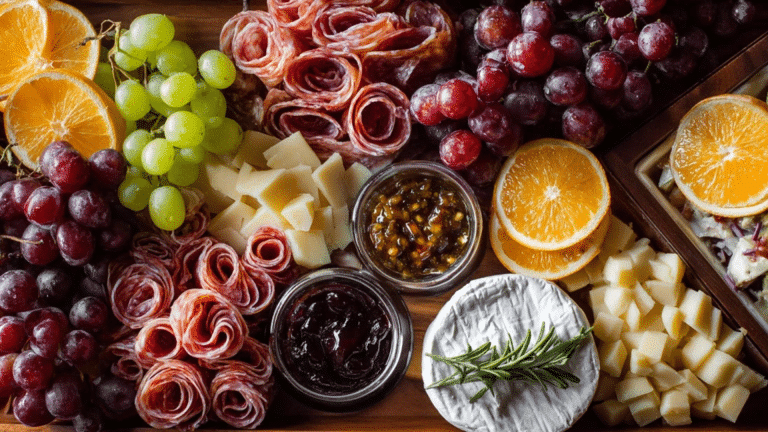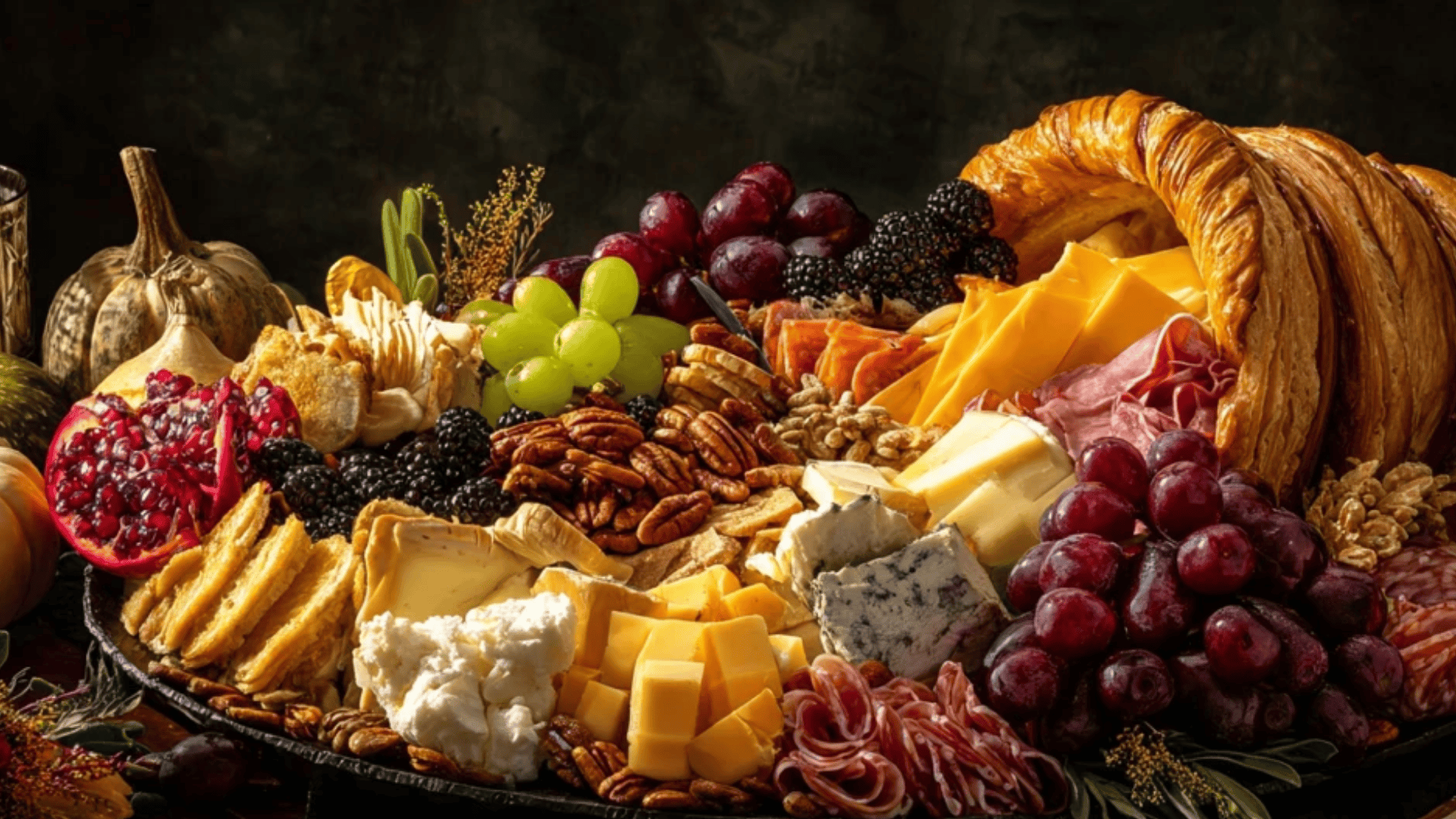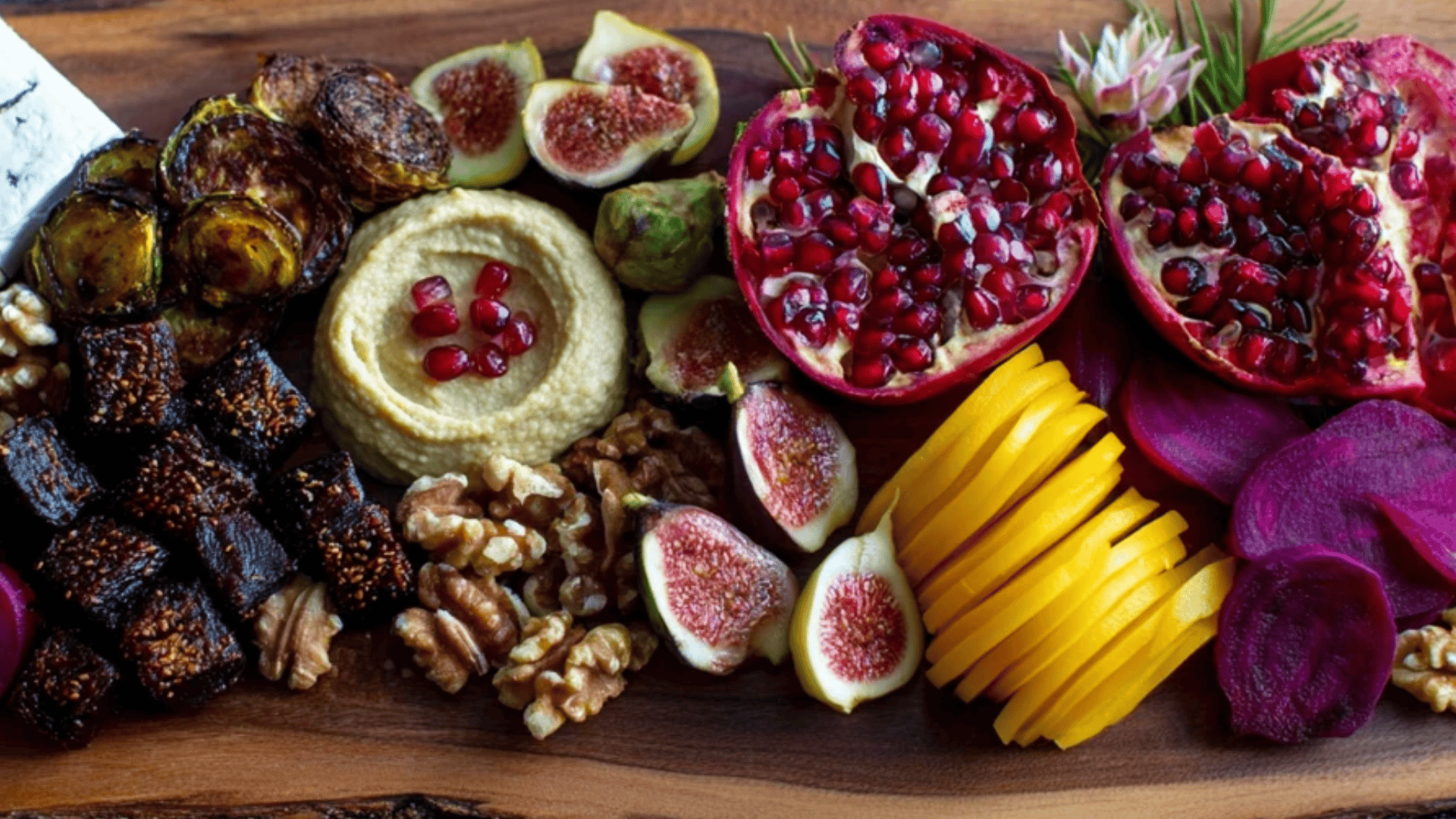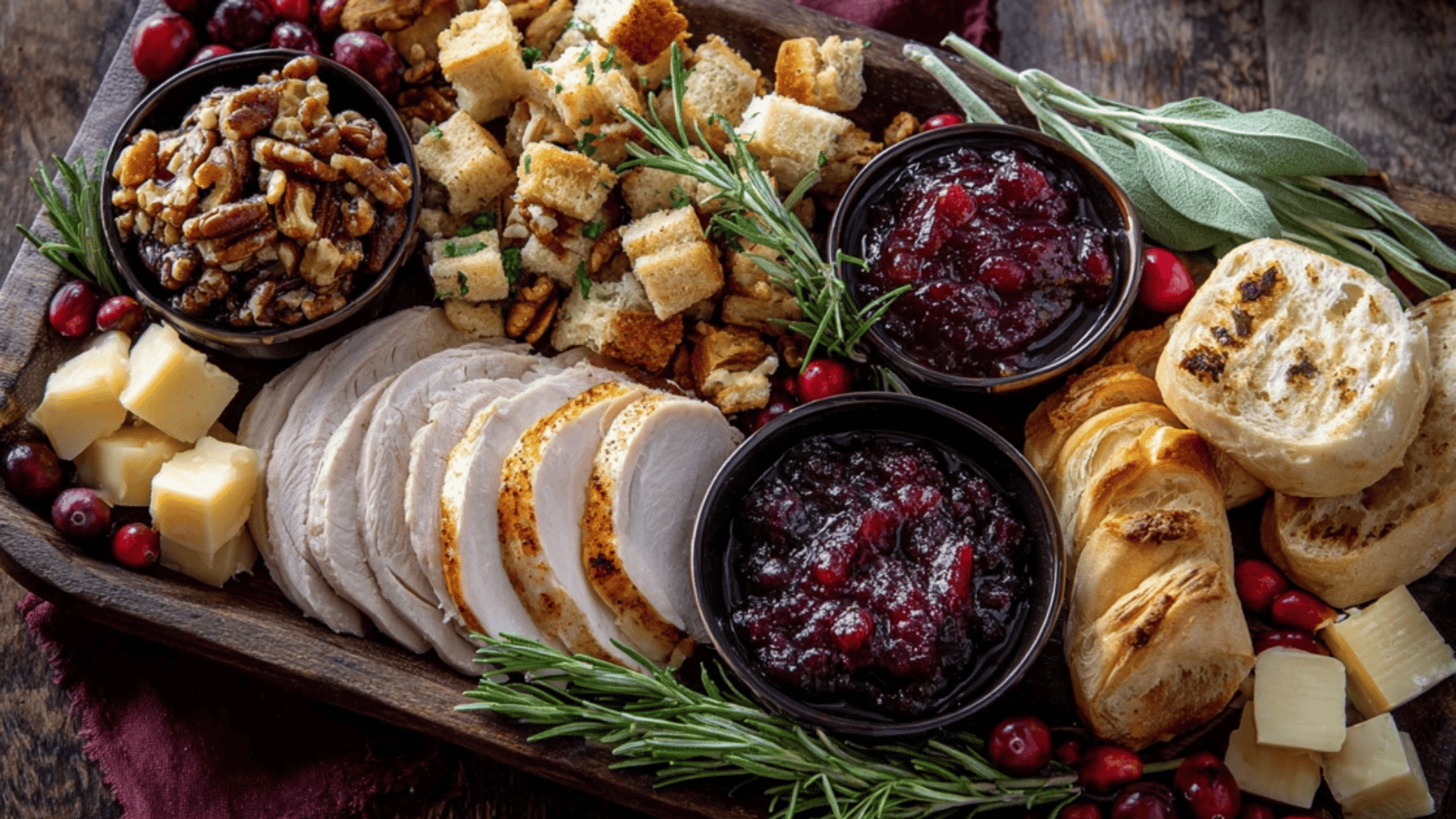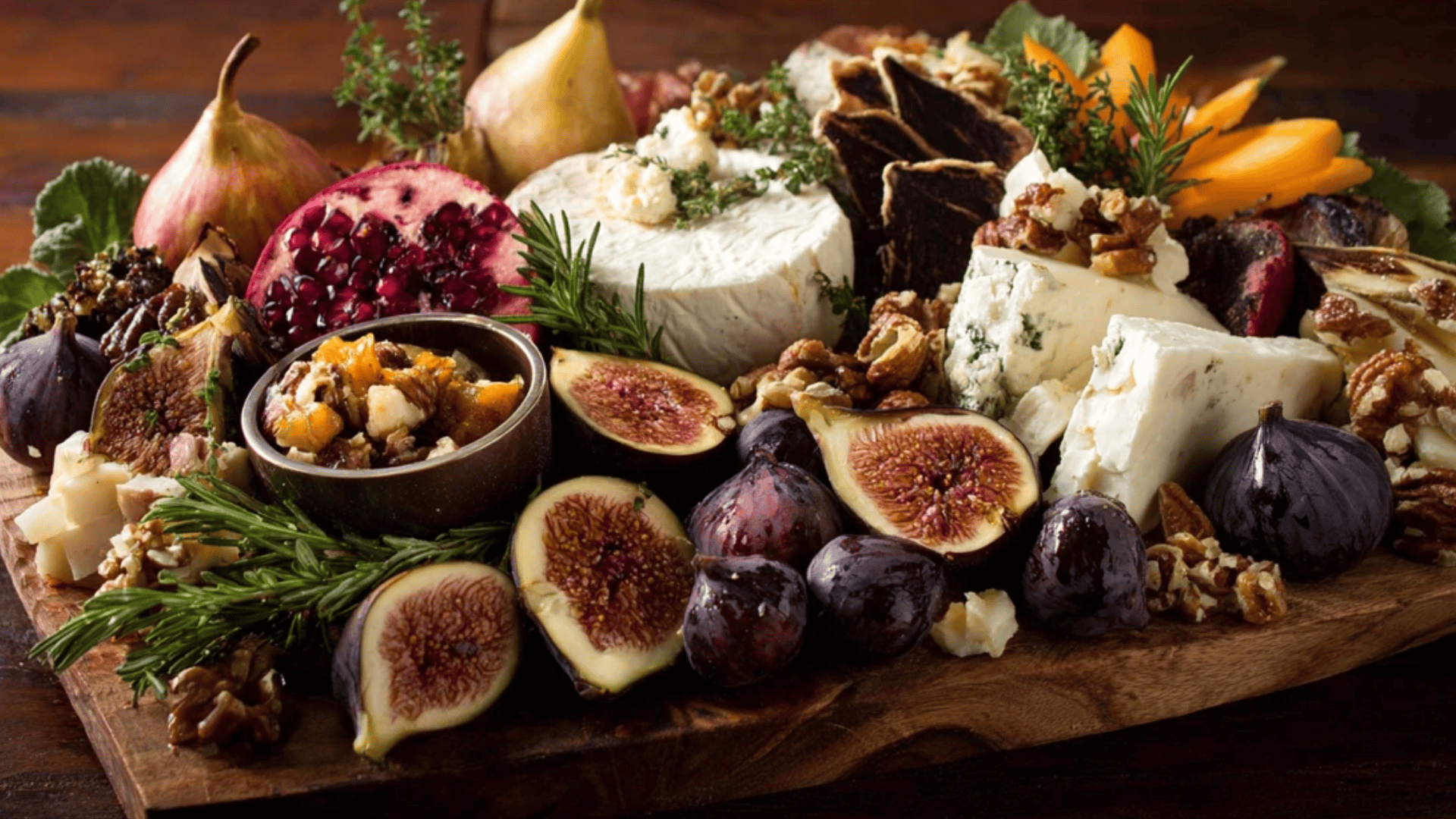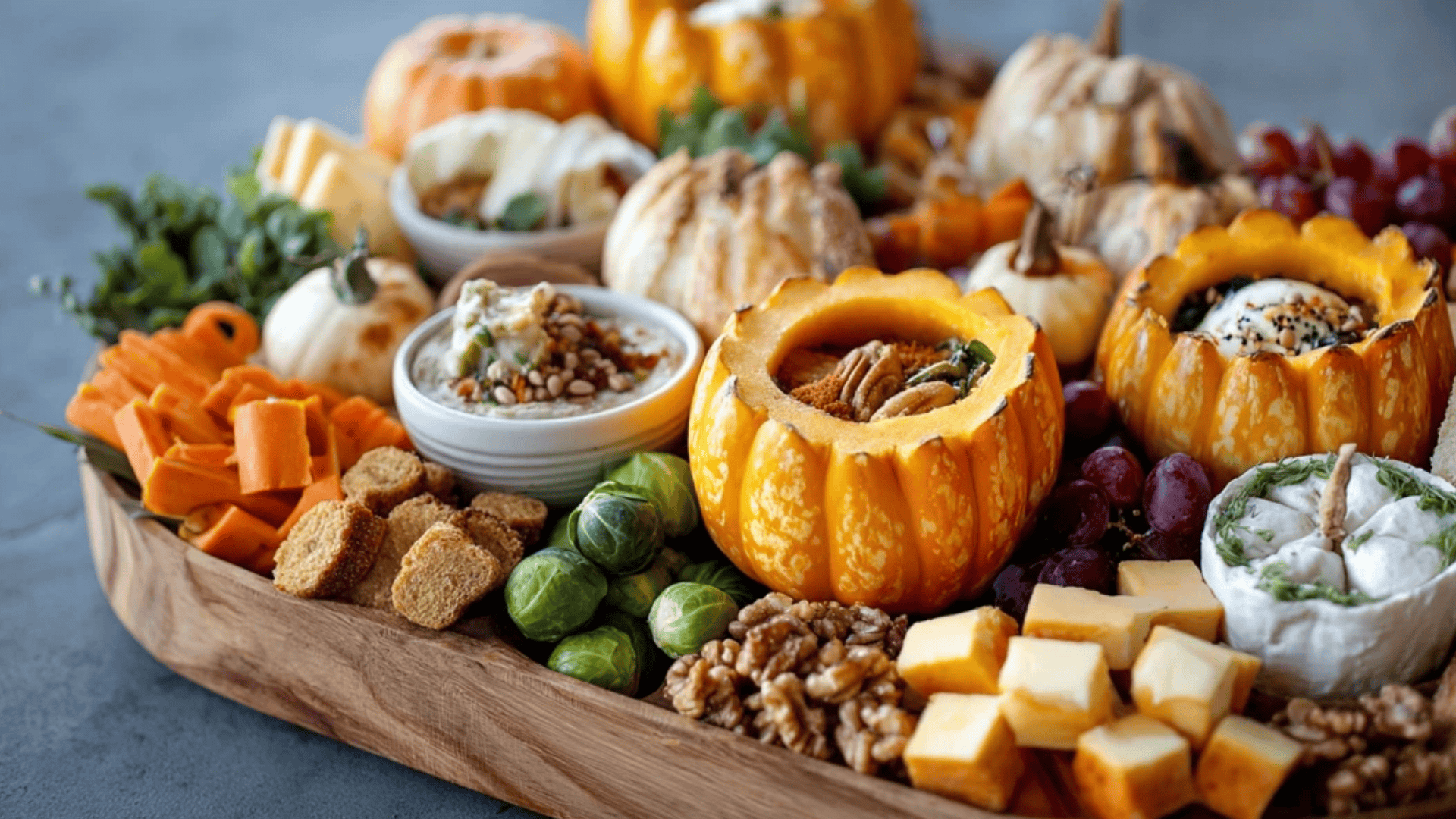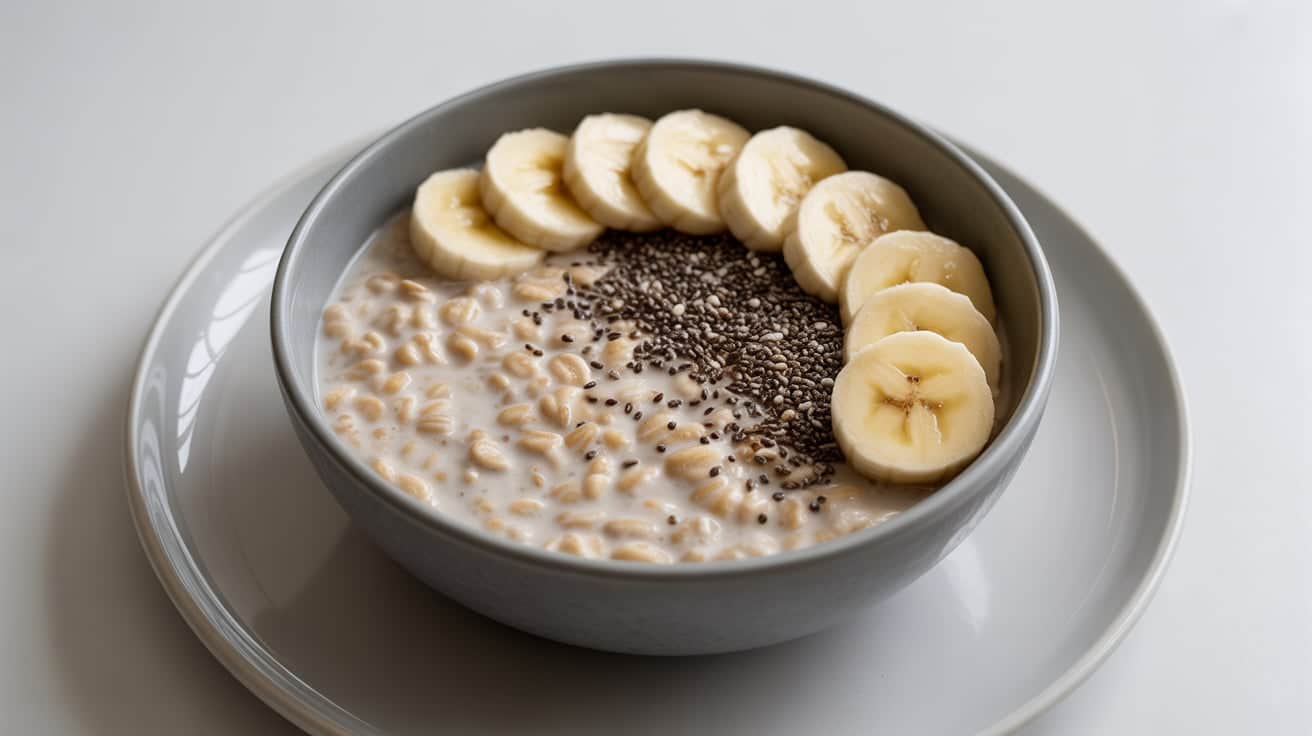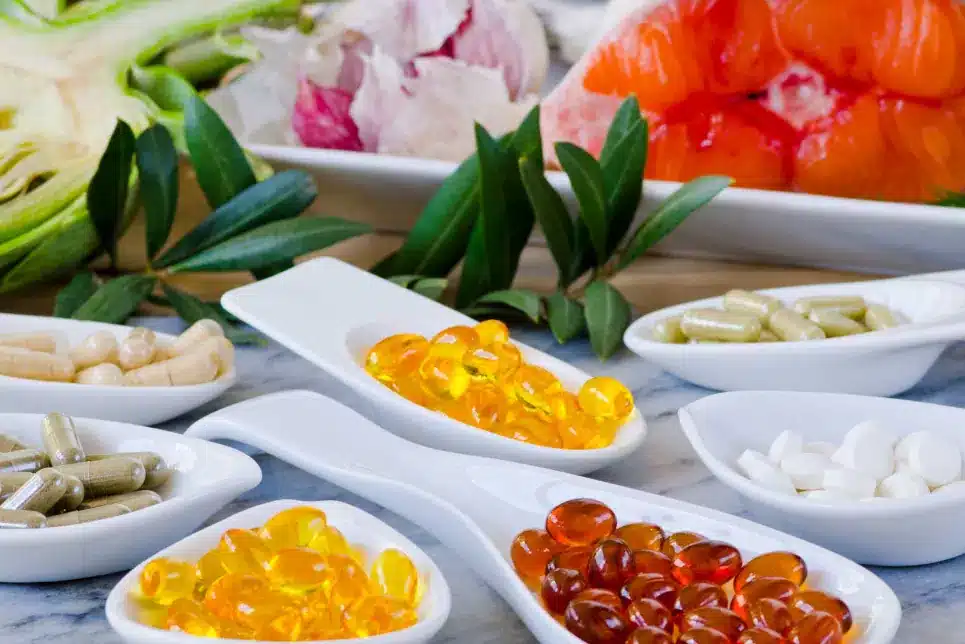Thanksgiving desserts don’t have to stop at pie. Cakes bring warmth, creativity, and a touch of elegance to your holiday table.
From cozy spiced flavors to rich chocolate and bright citrus, there’s something here for every taste.
These Thanksgiving cake ideas blend traditional autumn ingredients like pumpkin, apple, maple, and pecan with fresh twists that surprise and delight.
When you’re baking for family, friends, or a festive gathering, these cakes celebrate the season’s best flavors and comforting aromas.
Find your favorite, preheat the oven, and let the sweetness of fall fill your kitchen.
Thanksgiving Dessert Flavors
Thanksgiving desserts are more than sweet endings; they’re memories baked into every bite.
The season brings flavors that feel like home: warm pumpkin spice, tart apple, sweet maple, and buttery pecan.
Each one captures the richness of fall and the comfort of gathering together. Soft, spiced cakes, creamy frostings, and caramel drizzles fill the air with familiar scents that invite connection.
If you love something fruity, nutty, or deeply chocolatey, Thanksgiving cakes celebrate gratitude in flavor form, reminding us that dessert isn’t just about indulgence.
It’s about sharing joy, warmth, and tradition with every forkful.
Thanksgiving Cake Ideas
Thanksgiving is the perfect time to look at desserts beyond pie.
These cake ideas bring all the cozy, spiced, and sweet flavors of fall to your table, each one unique, festive, and made to celebrate the season’s warmth and abundance.
1. Pumpkin Spice Layer Cake
Warm pumpkin, cinnamon, nutmeg, and clove create a cozy fall flavor. Soft layers and tangy cream cheese frosting combine for a comforting, crowd-pleasing Thanksgiving dessert everyone loves.
|
Ingredients
|
Steps:
- Whisk pumpkin, eggs, sugar, and oil
- Add dry ingredients and mix gently
- Bake layers at 350°F for 25–30 minutes
- Cool and frost with cream cheese frosting
Nutrition per serving: 420 calories, 5g protein, 52g carbs, 20g fat
2. Apple Cinnamon Coffee Cake
Tender crumb, fresh apples, and a cinnamon swirl make this cake perfect for mornings or dessert. It’s lightly sweet, comforting, and pairs beautifully with coffee after Thanksgiving meals.
|
Ingredients
|
Steps:
- Cream butter, sugar, and eggs
- Add sour cream and dry ingredients
- Fold in apples
- Layer with cinnamon–brown sugar swirl
- Bake at 350°F for 40 minutes
Nutrition per serving: 360 calories, 4g protein, 48g carbs, 16g fat
3. Maple Walnut Bundt Cake
Pure maple syrup and toasted walnuts create a nutty, fragrant cake with gentle sweetness. Moist, golden, and aromatic, it’s an elegant centerpiece that highlights warm autumn flavors beautifully.
|
Ingredients
|
Steps:
- Beat butter, syrup, and sugar
- Add eggs and vanilla
- Mix in dry ingredients
- Fold in walnuts
- Bake in Bundt pan at 350°F for 45–50 minutes
Nutrition per serving: 390 calories, 6g protein, 45g carbs, 18g fat
4. Cranberry Orange Sheet Cake
Bright orange zest and tart cranberries bring fresh, festive flavor to this simple sheet cake. Moist, colorful, and cheerful, it’s perfect for serving large Thanksgiving gatherings effortlessly.
|
Ingredients
|
Steps:
- Beat butter, sugar, and eggs
- Add milk, zest, and dry ingredients
- Fold in cranberries
- Spread in a sheet pan and bake at 350°F for 30 minutes
Nutrition per serving: 310 calories, 4g protein, 55g carbs, 9g fat
5. Pecan Pie Layer Cake
Brown sugar cake layers filled with gooey pecan filling deliver the nostalgic flavor of pecan pie. Rich, buttery, and indulgent, it’s an unforgettable twist on a beloved holiday classic.
|
Ingredients
|
Steps:
- Cream butter and brown sugar
- Mix in eggs and vanilla
- Add dry ingredients, then fold in pecans
- Bake at 350°F for 25–30 minutes
- Fill layers with caramel or pecan filling
Nutrition per serving: 480 calories, 5g protein, 58g carbs, 24g fat
6. Sweet Potato Marshmallow Cake
Velvety sweet potato cake meets toasted marshmallow frosting, creating a cozy, fireside-inspired dessert. Lightly spiced, moist, and comforting, it’s perfect for anyone who loves sweet potato casserole flavors.
|
Ingredients
|
Steps:
- Blend sweet potato, eggs, sugar, and oil
- Add dry ingredients
- Bake at 350°F for 30–35 minutes
- Frost and lightly toast the marshmallow topping
Nutrition per serving: 400 calories, 4g protein, 50g carbs, 17g fat
7. Caramel Apple Upside-Down Cake
Caramelized apples form a glossy, flavorful topping over moist cinnamon-spiced cake. Sweet, buttery, and aromatic, each slice delivers the warm, nostalgic taste of classic fall caramel apples.
|
Ingredients
|
Steps:
- Pour caramel into the cake pan and arrange apples
- Mix the batter and pour it on top
- Bake at 350°F for 40 minutes
- Flip onto a plate while warm
Nutrition per serving: 370 calories, 3g protein, 53g carbs, 15g fat
8. Gingerbread Loaf Cake with Cream Cheese Frosting
Molasses, cinnamon, and ginger create a rich, nostalgic flavor in this dense loaf. Cream cheese frosting adds tangy balance, making it a comforting holiday dessert with warm, familiar spice.
|
Ingredients
|
Steps:
- Cream butter, sugar, and molasses
- Add eggs, then dry ingredients
- Bake at 350°F for 45 minutes
- Cool and frost
Nutrition per serving: 340 calories, 4g protein, 47g carbs, 14g fat
9. Chai Tea Vanilla Cake
Chai-infused milk brings notes of cinnamon, cardamom, and cloves to a moist vanilla cake. Aromatic, cozy, and lightly sweet, it adds a beautifully unexpected twist to Thanksgiving dessert.
|
Ingredients
|
Steps:
- Beat butter and sugar
- Add eggs and vanilla
- Mix in flour and chai milk
- Bake at 350°F for 30 minutes
Nutrition per serving: 300 calories, 5g protein, 44g carbs, 10g fat
10. Pumpkin Chocolate Chip Cake
Warm pumpkin spices blend with rich chocolate chips for a moist, balanced cake. Comforting, familiar, and festive, it’s perfect for those who love a cozy fall-inspired dessert.
|
Ingredients
|
Steps:
- Mix wet ingredients
- Add dry ingredients
- Fold in chocolate chips
- Bake at 350°F for 35 minutes
Nutrition per serving: 410 calories, 5g protein, 55g carbs, 18g fat
11. Almond Cranberry Cake
Soft almond cake meets bursts of tart cranberry for a light, elegant holiday dessert. Subtle, nutty sweetness and bright fruitiness create a refreshing balance after a hearty Thanksgiving meal.
|
Ingredients
|
Steps:
- Beat butter, sugar, and eggs
- Add extract and dry ingredients
- Fold in cranberries
- Bake at 350°F for 30–35 minutes
Nutrition per serving: 320 calories, 5g protein, 48g carbs, 11g fat
12. Carrot Cake with Spiced Cream Cheese Frosting
Grated carrots, pineapple, and cinnamon create incredible moisture and flavor. The spiced cream cheese frosting adds warmth and tang, making this timeless favorite perfect for Thanksgiving celebrations.
|
Ingredients
|
Steps:
- Mix wet ingredients and carrots
- Add dry ingredients
- Bake at 350°F for 30–35 minutes
- Frost when cool
Nutrition per serving: 390 calories, 4g protein, 50g carbs, 16g fat
13. Chocolate Caramel Pecan Cake
Decadent chocolate layers filled with smooth caramel and toasted pecans create an indulgent dessert. Rich cocoa and nutty sweetness combine into a luxurious Thanksgiving showstopper everyone remembers.
|
Ingredients
|
Steps:
- Mix cocoa, flour, and sugar
- Add eggs and oil
- Bake at 350°F for 25 minutes
- Layer with caramel and pecans
Nutrition per serving: 500 calories, 6g protein, 60g carbs, 24g fat
14. Apple Cider Donut Bundt Cake
Inspired by fall donuts, this moist cake combines spiced apple batter with a cinnamon-sugar coating. Aromatic, nostalgic, and festive, it captures the essence of crisp autumn days.
|
Ingredients
|
Steps:
- Cream butter and sugar
- Add eggs, cider, and dry ingredients
- Bake at 350°F for 45 minutes
- Dust with cinnamon sugar
Nutrition per serving: 350 calories, 4g protein, 51g carbs, 12g fat
15. Rum Glazed Apple Rum Cake
Tender apple-rum cake soaked in warm rum glaze creates a moist, aromatic dessert. Sweet, spiced, and perfectly balanced, it’s a festive treat ideal for Thanksgiving celebrations.
|
Ingredients
|
Steps:
- Cream butter and sugar
- Add eggs and rum
- Fold in the dry ingredients and apples
- Bake at 350°F for 40 minutes
- Pour warm rum glaze on top
Nutrition per serving: 380 calories, 3g protein, 50g carbs, 15g fat
Troubleshooting Tips for Your Baking
Even the best recipes can go wrong, but small adjustments make all the difference. Keep your ingredients fresh and your oven accurate, and you’ll bake with confidence every time.
-
Prevent dryness: Add a spoonful of yogurt or reduce bake time slightly.
-
Fix sinking centers: Avoid overmixing and don’t open the oven door early.
-
Balance sweetness: Use brown sugar or a pinch of salt to deepen flavor.
-
Improve texture: Bring eggs and butter to room temperature before mixing.
-
Preserve freshness: Store cakes covered or wrapped once cooled to lock in moisture.
Conclusion
Thanksgiving cakes are a beautiful way to end a meal filled with gratitude and warmth.
Each flavor tells a small story of the season: pumpkin spice, maple, apple, and cinnamon all blend into something comforting and memorable.
No matter which one you choose, the joy of sharing it matters most. Baking brings people together, and every slice becomes part of the celebration.
As the table fills with laughter and the scent of sweet spices, these cakes remind us that the simplest moments, made with love, are the ones that stay with us the longest.









